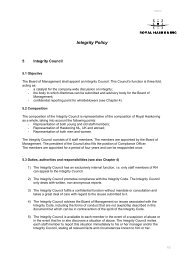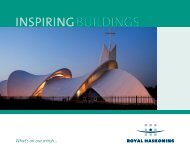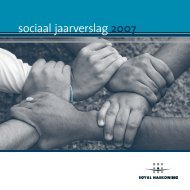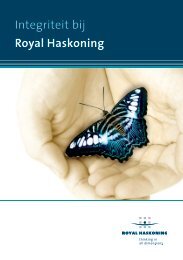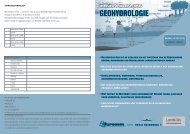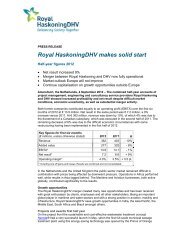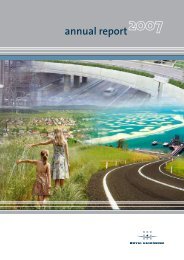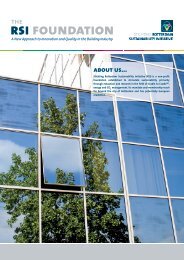book "Building the Water Sensitive City" - Royal Haskoning
book "Building the Water Sensitive City" - Royal Haskoning
book "Building the Water Sensitive City" - Royal Haskoning
You also want an ePaper? Increase the reach of your titles
YUMPU automatically turns print PDFs into web optimized ePapers that Google loves.
Clean and healthy water<br />
<strong>Water</strong> offers a wealth of opportunities for recreation or for living by <strong>the</strong> water, it is <strong>the</strong> source<br />
of drinking water for people and livestock and for <strong>the</strong> irrigation of crops. Healthy water also<br />
provides a home for many different types of plants and animals, which we can all enjoy as<br />
part of <strong>the</strong> beauty of nature. Good water quality ensures that animal life (fish, plants, macro<br />
fauna etc.) can function effectively. This implies <strong>the</strong> need for good nutrient management<br />
and <strong>the</strong> absence of toxic effects due to low oxygen levels or (excessive) emissions of toxic<br />
chemicals.<br />
The aim is always to avoid pollution. There is a distinction to be made between <strong>the</strong> approach<br />
to managing (and maintaining) single discharge points and diffuse (water) pollution. Single<br />
discharge points include sewer overflows, rain water run-off and discharge from waste<br />
water treatment plants. Diffuse water pollution includes <strong>the</strong> presence of leached (building)<br />
materials, as well as issues relating to disasters, maintenance, etc. The diffuse pollution<br />
of surface water by building materials must be prevented by choosing suitable materials<br />
for building activities (sustainable building). The use of leachable and oxidisable building<br />
materials must be avoided. These measures relate both to material regulations for new build<br />
projects and preventing pollution caused by run-off from hard surfacing.<br />
In some low-lying parts of <strong>the</strong> Ne<strong>the</strong>rlands (brackish) seepage and salinisation is a growing<br />
problem. The aim is to retain fresh rain water in <strong>the</strong> surface and groundwater system for<br />
longer. Establishing flexible water level management and realizing seasonal storage will<br />
produce benefits to counter salinisation in polders.<br />
30<br />
prevent<br />
pollution<br />
reduce<br />
salinisation<br />
water<br />
treatment







